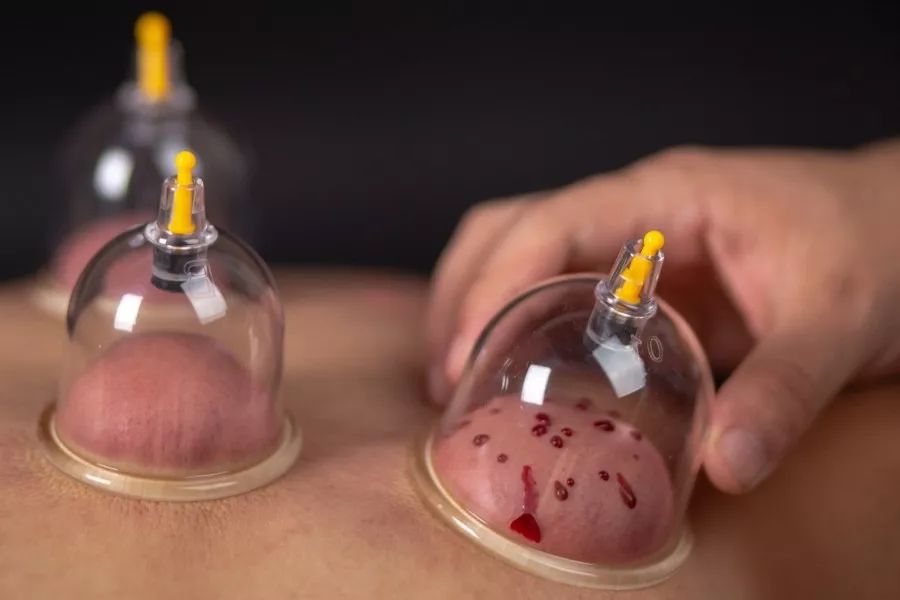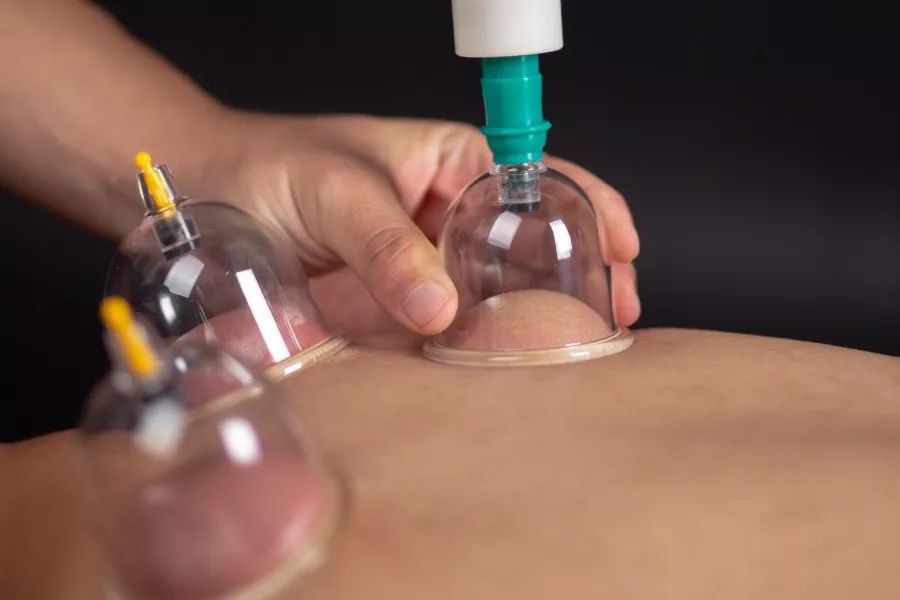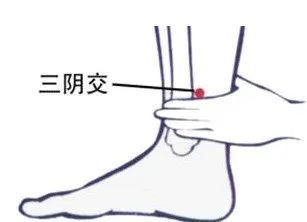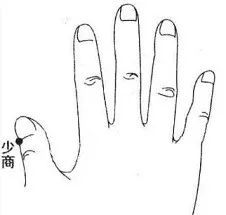
Definition of Bloodletting Therapy
Bloodletting therapy (cì luò fàng xuè) is a unique acupuncture treatment method in Traditional Chinese Medicine (TCM). It is one of the most commonly used therapeutic techniques since the era of the “Huangdi Neijing” (Inner Canon of Huangdi), which even considers bloodletting as the first choice for treating diseases and alleviating suffering.
This external treatment method involves using a three-edged needle (sān líng zhēn) or a thick, sharp needle to puncture specific acupuncture points or superficial blood vessels on the patient, allowing a certain amount of blood to be released to achieve therapeutic effects.
Functions of Bloodletting Therapy1. Antipyretic Effect
In TCM, fever is primarily categorized into two types: Yang excess heat and Yin deficiency heat. The antipyretic effect of bloodletting is applicable to the former.
Since excess Yang energy leads to an abundance of blood, bloodletting can reduce this excess, thereby diminishing the evil heat in the blood vessels and normalizing the body’s Qi and blood.
2Analgesic Effect
TCM holds that “where there is flow, there is no pain; where there is pain, there is blockage.” This means that diseases with pain symptoms must have obstructed areas in their meridians.
Bloodletting therapy can directly expel the stagnant pathogenic factors from the meridians, adjusting the blocked situation, allowing the meridians to flow freely, and thus immediately alleviating pain.
In clinical practice, many acute conditions, such as headaches and other ailments, have shown rapid improvement with bloodletting therapy.
3Detoxifying Effect
The detoxifying effect in TCM refers to the body’s inability to resist toxic evils due to pathological conditions, leading to symptoms such as “red thread sores” caused by excessive toxic heat.
Bloodletting not only helps expel the invading toxins from the body but also plays a crucial role in “regulating blood and Qi,” restoring normal bodily functions to inhibit the spread and regeneration of pathogenic factors.
4Clearing Heat Effect
TCM believes that internal heat disturbances can lead to various diseases, often manifesting as restlessness, limb pain and swelling, irritability, and even fever and confusion.
Bloodletting therapy can directly expel the heat evils along with the blood, making it suitable for various heat syndromes.

5Reducing Swelling Effect
Swelling and pain are often caused by Qi stagnation and blood stasis, leading to obstruction in the meridians.
Bloodletting can directly eliminate the stagnant Qi and blood along with the pathogenic factors in the local meridians, promoting unobstructed flow and achieving the goal of reducing swelling.
6Anti-Itch Effect
Itching is a manifestation of wind evils present in the blood vessels; thus, the treatment principle is “treat the blood first to eliminate wind, as the wind will dissipate when the blood flows smoothly.””>
Bloodletting regulates blood and Qi, ensuring smooth blood flow, thereby eliminating wind evils and achieving the effect of relieving itching.
7Relieving Numbness Effect
Qi deficiency may fail to guide blood to the extremities, or blood deficiency may fail to nourish, often resulting in numbness symptoms.
Using fine needles to puncture the acupuncture points on the affected limbs to release a small amount of blood is guided by the theory of blood moving Qi, yielding good results.
8Anti-Nausea Effect
Acute vomiting often results from excessive heat or liver Qi counterflow invading the stomach or food stagnation. Bloodletting can drain heat, pacify liver counterflow, and facilitate the downward movement of stagnant food in the intestines, thus alleviating nausea and vomiting.

Methods of Bloodletting Therapy01. Segmental Bloodletting Method
This method selects acupuncture points for bloodletting based on the location of the disease. For conditions affecting the head, puncture the temples; for conditions above the navel, puncture the Chize (尺泽) or Quchi (曲池) points; for conditions below the navel, puncture the Weizhong (委中) point. These points are located near superficial major veins and are suitable for puncturing; the “Lingshu: Nine Needles” states that the Taiyin, Jueyin, and Taiyang meridians are all blood-rich meridians. For those with abundant blood, bloodletting is advisable, and the temple is an extraordinary point for treating head and facial diseases effectively, while Chize and Weizhong are combined points primarily for visceral disorders, hence their frequent use by practitioners.
In clinical practice, it is often necessary to combine other points for puncturing. This method is commonly used for deeper conditions or visceral diseases, where there are both local primary symptoms and accompanying systemic symptoms.
For example, for headaches with red, swollen eyes accompanied by fever, puncture the temple for bloodletting and also puncture the Hegu (合谷) point; for headaches and sore throat with fever, puncture the temple for bloodletting and also puncture the Shaoshang (少商) and Quchi points; for red, swollen, painful breasts with fever, puncture the Chize point for bloodletting and apply local heat; for upper abdominal pain and vomiting with fever, puncture the Chize point for bloodletting and also puncture the Zhongwan (中脘) and Liangqiu (梁丘) points; for lower right abdominal pain with constipation and fever, puncture the Weizhong point for bloodletting and also puncture the Zusanli (足三里) and Tianshu (天枢) points; for lower abdominal pain with purulent blood stools and fever, puncture the Weizhong point for bloodletting and also puncture the Quchi and Tianshu points.
02Meridian Following Bloodletting Method
This method is guided by the theory of “where the meridian passes, the treatment follows” to perform bloodletting along a specific meridian or several meridians affected by disease. In clinical practice, the disease is categorized according to the meridian, and bloodletting is performed along the surface meridians, following the rules of meridian pathways and collateral channels.
This method is not limited to acupuncture points or painful areas but can also involve puncturing superficial veins along the meridian pathways. The principle is “better to lose the point than to lose the meridian.””>
For example, for acute low back pain affecting both sides of the spine, which belongs to the foot Taiyang meridian Qi obstruction, puncture the Weizhong point for bloodletting and also puncture the most painful area of the lower back; for pain along the spine, puncture the Renzhong (人中) point for bloodletting and also puncture the Qihai (气海) and Taichong (太冲) points; for wind-heat mastitis with sore throat and difficulty breathing, puncture the Shaoshang point for bloodletting and also puncture the Tianzhu (天柱) point; for vertex headache, dizziness, and eye swelling, puncture the Baihui (百会) and temple points for bloodletting and also puncture the Fengchi (风池) point.

03Pattern Differentiation Bloodletting Method
This method is guided by the theories of organ differentiation, Qi and blood differentiation, and meridian differentiation to select acupuncture points for bloodletting based on the identified patterns.
For example, for women with dysmenorrhea and cold pain in the lower abdomen, where abdominal pain precedes menstruation, this indicates Qi stagnation and blood stasis, with obstruction in the foot three Yin meridians. Puncture the Sanyinjiao (三阴交) point, which is the intersection of the foot three Yin and Ren meridians, for bloodletting. Sanyinjiao benefits the liver and kidneys and regulates the menstrual cycle, similar to the effects of the Siwu Decoction (四物汤). Also puncture the Qihai point to regulate Qi, and moxibustion at the Guanyuan (关元) point to warm the uterus, achieving the effects of regulating Qi and blood;
For skin itching and redness, indicating heat in the blood, puncture the Sanyinjiao and Xuehai (血海) points for bloodletting to regulate blood, clear heat, and regulate menstruation, supplemented by puncturing the Quchi point to dispel wind and nourish the blood, and puncturing the Shaofu (少府) point to clear the heart and dissipate heat;
For acute ankle sprains, indicating local Qi obstruction and blood stasis, puncture the Ashi (阿是) and Taichong points for bloodletting to promote Qi and invigorate blood;
For carbuncles and boils, based on the principle that “all pain and itching sores belong to the heart,” puncture the Quchi point for bloodletting to drain heat from the heart meridian. If accompanied by fever, also puncture the Dazhui (大椎) and Quchi points. If the sore appears on the back of the neck, also puncture the Weizhong point for bloodletting to clear heat from the Taiyang meridian; if it appears in the hypochondriac region, also puncture the Yanglingquan (阳陵泉) point for bloodletting to clear heat from the Shaoyang meridian; if it appears in the limbs, puncture along the meridian or the Ashi points for bloodletting to drain meridian heat and detoxify.
04Local Bloodletting Method
This method involves performing bloodletting at the local site of the disease, either at acupuncture points or in localized areas, and is more suitable for conditions that are localized and superficial.
For example, for swollen and stiff tongues, puncture the Jinjing (金津) and Yuye (玉液) points for bloodletting; for toothache and gum swelling, perform bloodletting at the affected area and puncture the Hegu point; for psoriasis with itching and scaling, use plum blossom needles to prick the local area for bloodletting, combined with cupping; for late-stage filariasis presenting as “rubber leg,” puncture the affected leg in various locations for bloodletting, and also puncture the Zusanli and Sanyinjiao points; for joint sprains and swelling, puncture the painful points for bloodletting.
05Emergency Bloodletting Method
This method is specifically used for emergencies and critical conditions, with four main characteristics:
① Located at the distal extremities, or puncturing the twelve Jing points;
② At superficial major veins;
③ Using extraordinary points outside the meridians;
④ Selecting points from the Du meridian and the Pericardium meridian.
This method provides strong stimulation, rapid effects, and can open meridians, expel heat, and awaken consciousness.
For example, in cases of syncope, puncture the Shixuan (十宣) points for bloodletting and also puncture the Renzhong point.
For stroke with closed syndrome, where the mouth cannot open, puncture the temple, Quchi, and Weizhong points for bloodletting, or puncture the twelve Jing points, and also puncture the Yongquan (涌泉) and Laogong (劳宫) points.
For snake bites on the upper limbs, puncture the Quchi and Bajie (八邪) points for bloodletting; for bites on the lower limbs, puncture the Sanyinjiao and Bafeng (八风) points for bloodletting.
For heatstroke, puncture the Quchi and Shixuan points for bloodletting, and also puncture the Yongquan point.

Corresponding Acupuncture Points for Different Symptoms
1. Cerebral Hemorrhage (Stroke)
For any bleeding, there must be unconsciousness; thus, puncture the Yintang (印堂), temple, Taichong, and Shixuan points to release 1-5 drops of blood, which can promote early awakening and reduce the severity of hemiplegia. Remember: if a patient remains unconscious for more than 24 hours, the rate of hemiplegia is over 90%. If it exceeds 72 hours, there is a 100% chance of post-stroke sequelae, which is extremely difficult to treat. Therefore, promoting early awakening is a priceless secret; once the patient awakens, puncture the Dazhui, Quchi, and Weizhong points for bloodletting to give the patient a chance of recovery.
2. Neuralgia
If it belongs to gallbladder meridian pain (outer thigh pain), carefully examine the Yanglingquan and Fenglong points for any obstructed blood vessels; if present, bloodletting may lead to recovery.
3. Long-lasting Sores and Boils
Puncture the heart point after bloodletting.
4. Early-stage Conjunctivitis, Stye
Puncture the temple for bloodletting, releasing 7-9 drops of blood, and also puncture the middle toe for 3-5 drops of blood; this can lead to recovery by the next day.
5. Rheumatism
Puncture 3 inches beside the third, fourth, and fifth thoracic vertebrae for bloodletting; many patients with severe conditions have recovered after 1-2 treatments.
6. Gastric and Duodenal Ulcers
Puncture the blue veins from the foot Neiting (内庭) to the Jiexi (解溪) points, and also puncture near the outer ankle for bloodletting. For gastric ulcers, look for blood vessels within 0.5 inches above and 2.5 inches below the Tiaokou (条口) point.
7. Chronic Nephritis
(1) Puncture the Ruyou (儒俞) point for bloodletting if there is yellow fluid; once the yellow fluid is gone, the patient will recover.
(2) Puncture around the kidneys.
(3) Puncture around the navel (do not puncture the center of the navel).
8. Hepatitis Bloodletting
Puncture the Yangjiao (阳交), Zusanli, Quchi, Yanglingquan, and Sanyinjiao points.

9. Cirrhosis with Ascites
Use the acupuncture points for hepatitis and add: Shenyu (肾俞), Yaoyang (腰俞), Tiaokou (条口) (0.5 inches above and outside), and Ganxu (肝俞).
10. Hemorrhoid Specific Points
(1) Chaojiao (龊交) point (inside the mouth); find the white spot, and 1-3 treatments may lead to recovery.
(2) For red, swollen, and ulcerated anal areas, puncture the Weizhong point, which will reduce the pain.
11. Insomnia
(1) Shenmen (神门), Xingjian (行间), and Zusanli points.
(2) Dazhui, Shenda (神道), Zhongwan, and perform cupping after puncturing.
12. Cervical Spondylosis
Puncture the tender points, Tianzong (天宗), Jianzheng (肩贞), and Chize points.
13. Chest Internal Injuries
Puncture the Dazhui, Jianjing (肩井), and then the injured area.
14. Shoulder Periarthritis
Puncture the Shenquan (肾关) point (1.5 inches below Yanglingquan) and Chize point; one treatment may yield results.
15. Acute and Chronic Throat Diseases
Puncture the Dazhui, Erjian (耳尖), and the veins behind the ear, Shaoshang, Quchi, and temple points; bloodletting will reduce pain.

16. Impotence
(1) Puncture the Shenxu (肾俞), Fuliu (复溜) points for bloodletting, and also puncture the Guanyuan and Shenshu (膀胱俞) points for cupping for 15 minutes.
(2) Puncture the Sanyinjiao, Mingmen (命门), and perform cupping at the Shenxu, Xuehai points.
17. Hypertension
Puncture the temple, Dazhui, ear tip, and Quchi points for bloodletting; blood pressure will drop immediately. Note: Do not drink water within one hour after bloodletting, or the effect will be diminished.
18. Asthma
Puncture the Dazhui, Feishu (肺俞), Fengmen (风门), and Gaozhao (膏盲) points for bloodletting; also puncture the Zhongfu (中府) and Dazhui points for cupping for 15 minutes.
19. Hyperlipidemia
Puncture the Dazhui, temple, Yaoyang, Weizhong, and Quchi points.
20. Rheumatic Heart Disease
Puncture the Yangjiao, Chize, and temple points.
21. Otitis Media
Puncture the outer ankle joint for bloodletting.
22. Epilepsy
(1) Puncture the temple, Quchi, Weizhong, and Yangjiao points.
(2) Puncture the Shaoshang and Renzhong points for bloodletting; also puncture the Ganxu and Dazhui points for cupping for 15 minutes.
(3) Find the painful points at the lower part of the back of the neck and the Neiguan (内关) point, and use plum blossom needles to prick for bloodletting.
23. Mental Illness
Puncture the temple, Quchi, Weizhong, Shuchong (术冲), Yangjiao, Fenglong, and Xinshu (心俞) points; perform cupping after bloodletting.

For diseases that have not responded to any treatment, one should puncture the blood vessels at the ankles, elbows, wrists, and knees to achieve unexpected effects.
Note:Bloodletting should generally not be performed at night; it is best done in the late morning or noon. This method is not suitable for individuals with weak constitutions, pregnant women, or those with poor coagulation mechanisms. It is particularly emphasized that the technique should be steady, precise, and gentle, rather than forceful, and the amount of bloodletting should not be excessive.
Source: Internet
Recommended Reading
Join Groups: Various specialized nursing WeChat groups, join quickly
Submissions: Original articles related to nursing are welcome for submission
e-Course:Invite nursing experts and influencers to join
Follow:WeChat public accounts categorized by nursing departments
Buy Books:Nursing books, click “Read More” below

